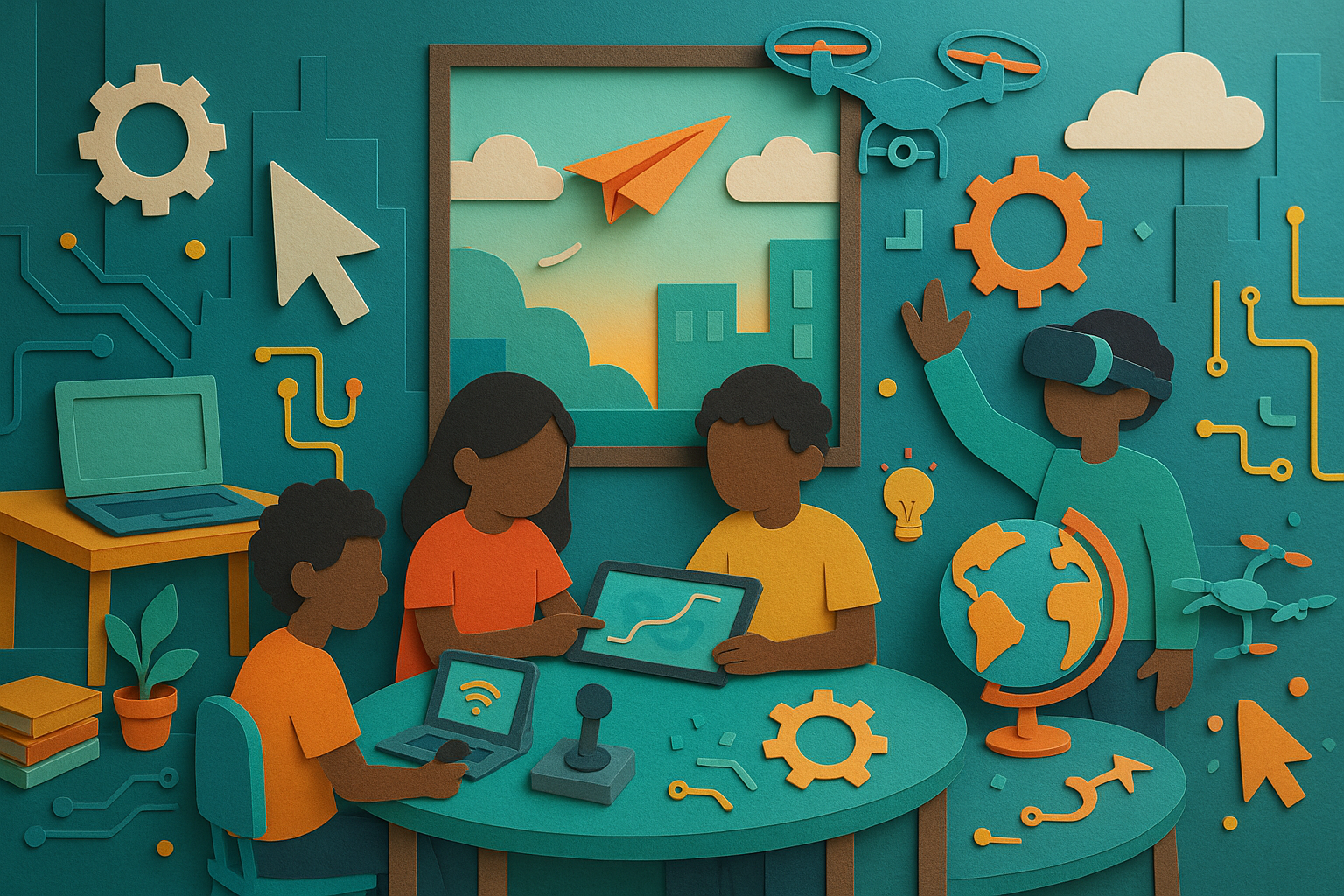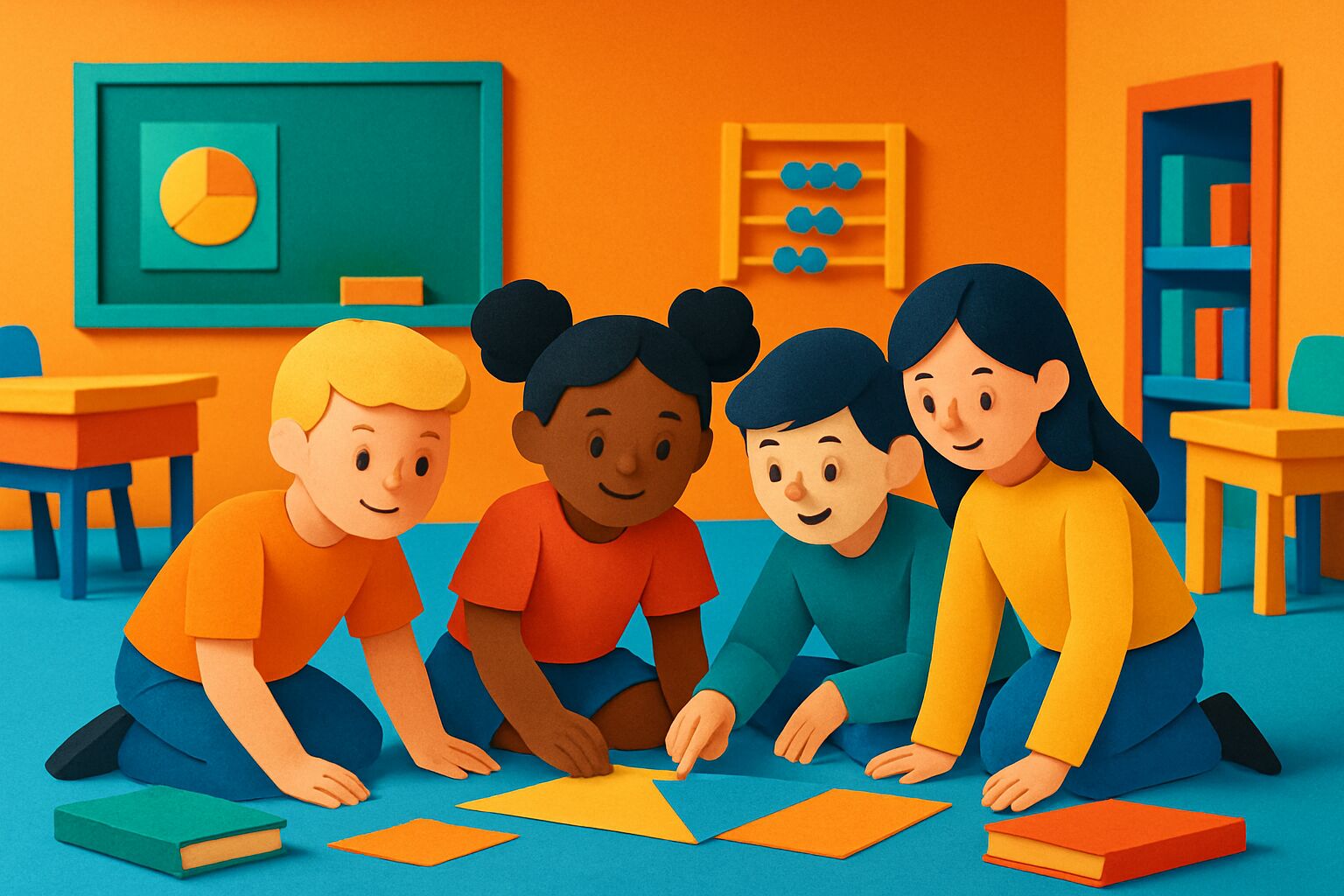
Engaging Students Through Technology in Afterschool Programs
At a time when toddlers can swipe before they can walk, today's students are arriving at school with a natural affinity for - and experience with - technology. Afterschool programs can tap into this affinity by expanding screen time into fun, engaging learning experiences that go beyond passive consumption. Engaging students through technology, and teaching them responsible use, paves the path towards becoming adults with strong digital skills, safe and effective online habits, and an understanding of how to use technology to solve problems and create opportunities.
Making Technology Work for Learning
The PUEO program in Hawaii brings physics to life through their aviation program. Students dive into real flight planning using aviation best-practices and Microsoft Flight Simulator, where they map and practice flying routes between Hawaiian airports. The program challenges them to calculate everything a pilot needs to know - from fuel requirements to weather patterns and flight duration. As students test their flight plans in the simulator, they discover how concepts like lift and drag work in practice. Even students who typically find physics challenging become excited about complex aviation calculations because they can immediately see their work in action.
What Works at Different Ages
Each age group requires different teaching methods when it comes to technology integration. Elementary students naturally gravitate toward digital tools that make the learning process feel like play. At this age, simple educational apps unlock creativity while building foundational technology skills. Digital literacy can develop naturally as young learners express themselves with classroom technology.
Middle school students thrive with collaborative learning platforms that support their growing independence. Online learning environments allow them to work together on projects, whether they're using tech tools for digital music or designing games. These students can also benefit from social media projects that let them showcase their student progress to peers and family.
High school students respond well to sophisticated concepts that connect to higher education and career goals. The course material should mirror what they might encounter in an online course or professional setting. Professional tools help these students build portfolios while improving student performance.
The Power of Creative Technology
At Wide Angle Youth Media in Baltimore, educators facilitate learning by creating an engaging learning environment where students explore community issues. Every learner who participates showed improvement in technical skills, but the program's impact on student success goes deeper. Through classroom instruction, active learning, and hands-on projects, students can practice and become better communicators and develop stronger teamwork abilities.
Finding the Right Balance
The MIRACLES Program in Chicago Public Schools shows how to blend technology with traditional learning methods. Their students learn math concepts through practical applications like using spreadsheets to analyze M&M color distributions—making statistics relevant and fun. They create multimedia presentations about local history, turning research skills into engaging storytelling opportunities. By partnering with NPR producers, students learn professional media skills while exploring their community's stories.
Making It Work in Your Program
Success with technology integration starts with clear goals. Consider what skills your students need most and how technology can help develop them, and don't be afraid to consider the skills they need to manage their own technology itself. Create opportunities for students to progress from basic skills to more advanced applications. Regular check-ins help track progress and adjust approaches based on student needs.
Choosing the right tools makes a big difference. Consider the tools you use for the class itself. Google Classroom can help organize assignments and track progress, track program attendance for compliance reasons with tools like Attendly, while the teaching apps provide the interactive learning experiences. Look for tools that encourage active participation and align with your program's learning goals.
Supporting your team requires ongoing attention. Regular training helps staff stay comfortable with technology and ready to help students. Having clear procedures for technical issues prevents disruptions from derailing activities. Create simple guidelines for what devices are allowed and not allowed in each program to help everyone understand how to use devices effectively.
Parent and family involvement strengthens these programs. Consistent99 updates about student achievements help families understand what their child is learning. And be thoughtful of when at-home access is an issue and consider offering family workshops about digital literacy and online safety. Most importantly, gather input from both students and parents about their interests and concerns.
Looking Forward
Programs like GET City in East Lansing show what's possible when students fully embrace technology learning. Through different STEM projects, their participants become local experts, creating podcasts about environmental issues and leading community workshops. This kind of program transforms students from consumers into confident creators and teachers.
The future of afterschool programs lies in finding ways to combine digital and hands-on learning experiences. Technology works best when it supports your program's broader goals while keeping students excited about learning. Focus on creating experiences that encourage exploration, creativity, and growth.
Remember that success with technology doesn't require cutting-edge devices or the latest apps. The most effective programs focus on fundamentals: clear goals, engaged students, supported staff, and involved families. By building these foundations, afterschool programs can help students develop the technology skills they'll need for future success.






